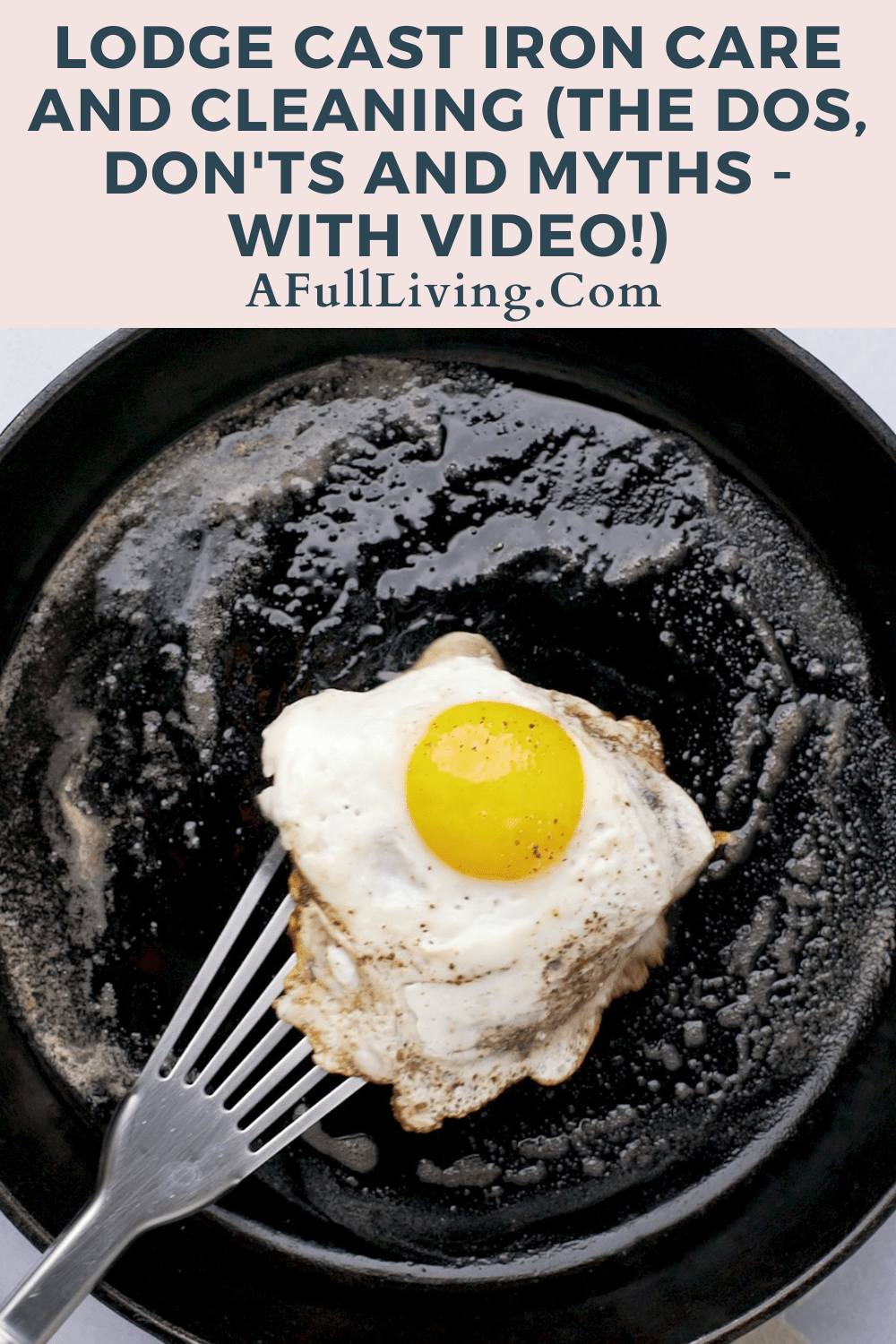
Did you get cast iron cookware for a gift and now you're intimidated on how to clean a cast iron skillet? This is the ultimate guide for Lodge Cast Iron skillet cleaning and care! Wondering how to get out caked on messes, and get shiny, non-stick surface to cook on? We'll show you just how eat it is to care for your Lodge Cast Iron cookware.
This affordable, durable and versatile cookware is our go-to in the kitchen. Cleaning and caring for it is so simple with a little practice! We promise, it's so easy, but there are a few dos, don'ts, and myths we will debunk to have your Lodge cast iron cookware looking and feeling its best, for ease of use and great results for whatever you're cooking and baking!
Disclosure: This post is a paid partnership with our wonderful friends at Lodge Cast Iron! As you know, we have been huge fans of their amazing cookware for years, and we use it for tons of our recipes. Thank you for supporting brands that help us in making awesome content!
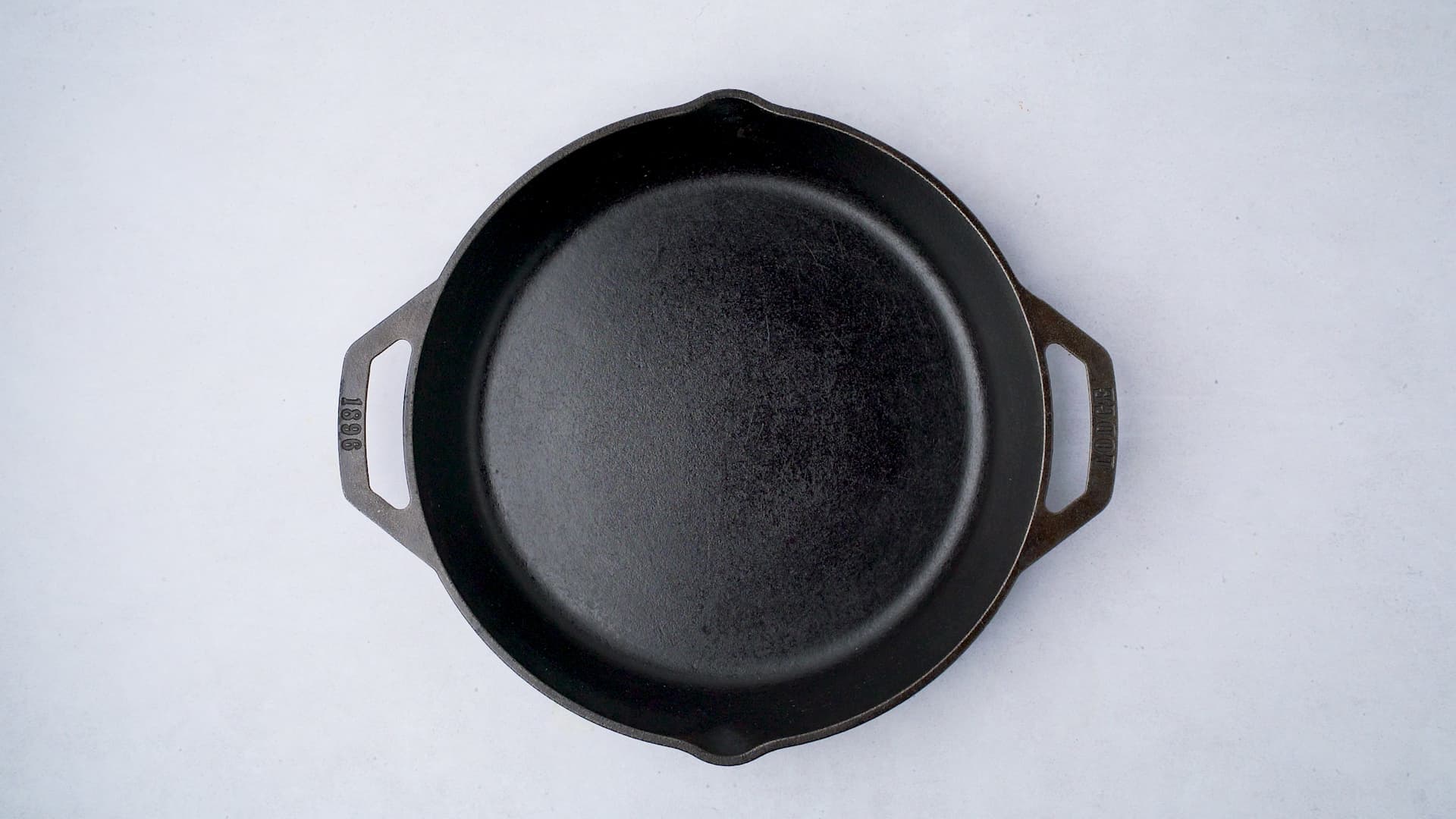
Table of contents
- How to Clean a Logde Cast Iron Skillet?
- Frequently Asked Questions:
- So What Is Cast Iron Seasoning?
- What Are The Best Oils for Cast Iron Pan Seasoning?
- Why Is My Cast Iron So Sticky?
- If My Lodge Cast Iron Rusts, Is It Ruined?
- How to Remove Rust from Cast Iron?
- Can I Clean My Cast Iron In the Dishwasher or Soak It To Remove Residue?
- Why is a Black Residue On My Food or Towel After Drying My Cast Iron Skillet?
- Some of Our Favorite Recipes That Use Your Lodge Cast Iron Skillet?
- Common Myths:
How to Clean a Lodge Cast Iron Skillet?
If you are looking to see how you can clean a Cast Iron Skillet properly, we have made a video including tips, tricks and myths when it comes to cleaning your cast iron skillet.
I am also going to show you a detailed step by step process so that you can easily clean your cast iron pan without getting intimidated by the myths.
The Basics: Lodge Cast Iron Cleaning
Like we mentioned, you should clean, dry and re-season (or oil) your cast iron every time you use it to keep it in top shape and to build up your base of seasoning. The more you use your cast iron, the more non-stick and slick the surface becomes. If you've ever heard people say that cast iron gets better over time, they meant it! Cast iron is extremely durable and will last a lifetime, and then some if well cared for. Read on to find out how to properly clean your Lodge cast iron every time. We use Lodge Cast Iron's cleaning method to keep our pans in top shape.
Step 1: Wash Your Cast Iron
Wash your dirty cast iron by hand, not in the dishwasher. (Seriously, don't put it in the dishwasher, unless you want to rust it!) You can use a little bit of soap if you want, and scrub everything away. Rinse with water.
You can use a scraper for any bits of food that are left on. For really tough stuck on messes (like eggs or cheese) simmer the pan with water for a few minutes until the bits come loose. Rinse with water, scrub with soap if desired, then rinse again.
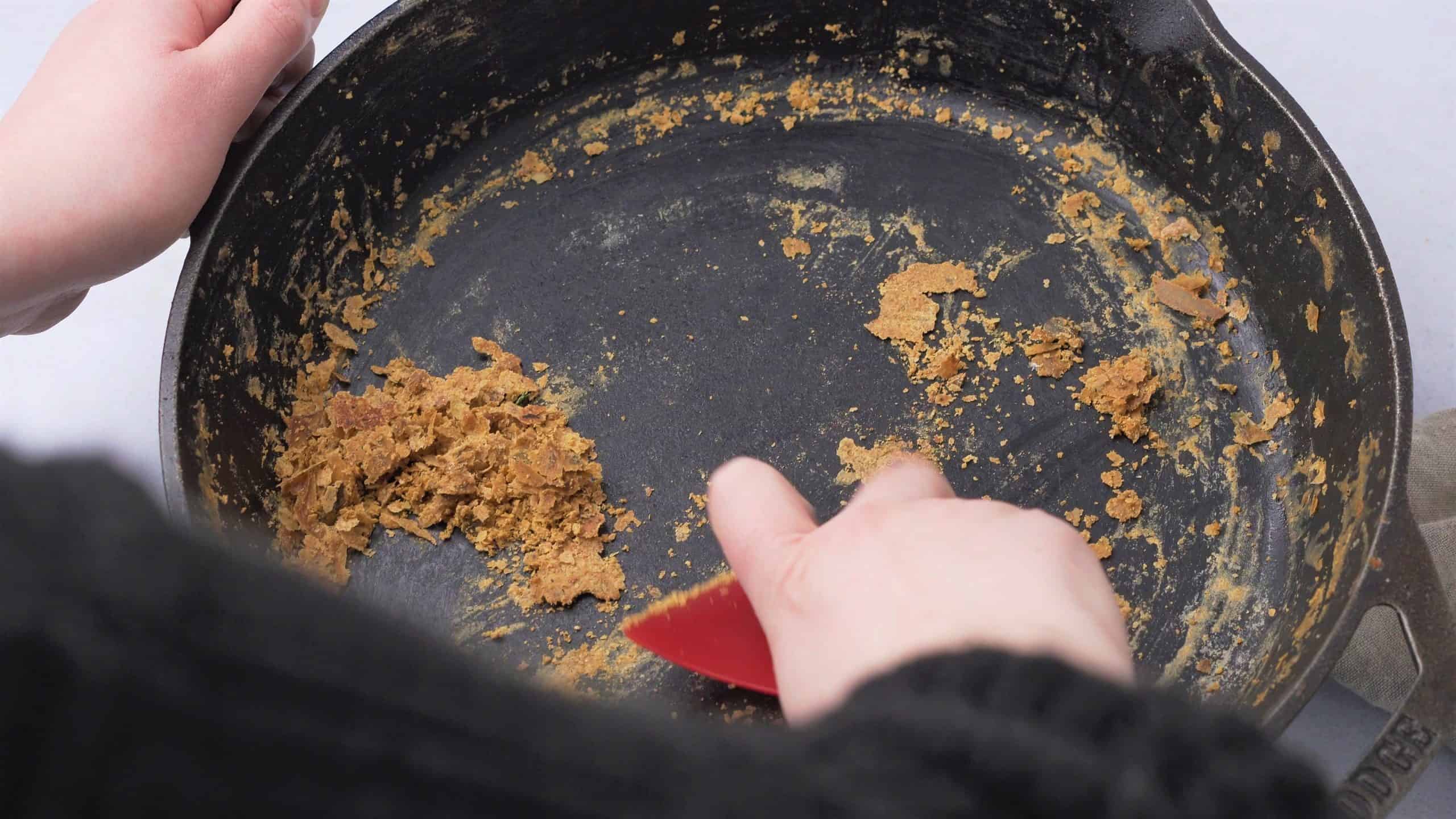
Step 2: Dry Your Cast Iron
Dry your cast iron right away completely with either a paper towel or a cloth. Make sure it is completely dry. Another method to drying your cast iron is to heat it over medium-low heat on the stove until the water evaporates completely. If you notice a little black residue on your towel, it's just seasoning and is perfectly normal.
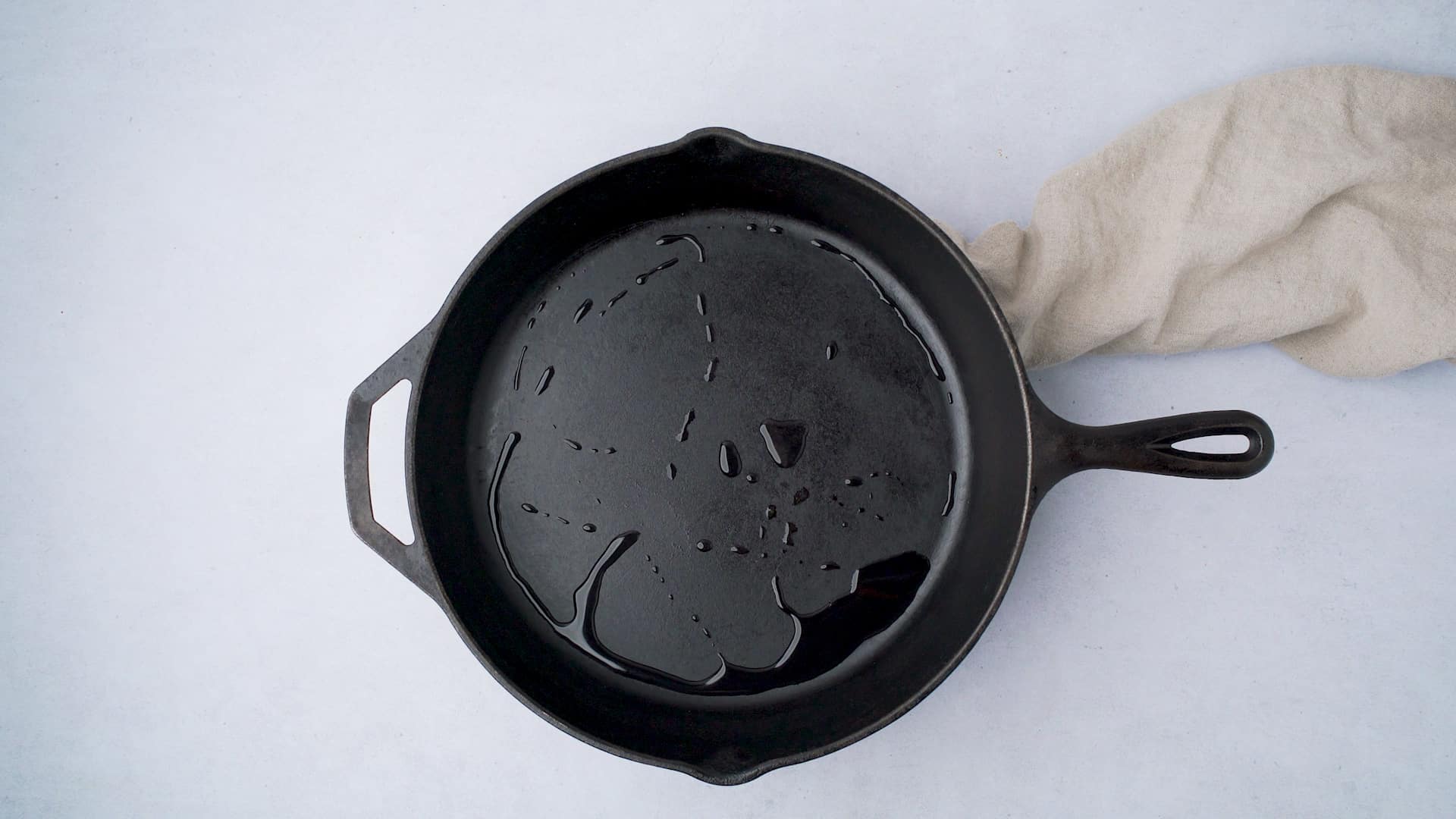
Step 3: Oil Your Cast Iron Also Known As Seasoning
After your cast iron is completely dry, apply a small dab of your favorite cooking oil or Seasoning Spray and rub it in completely on all the whole surface of your cookware. Use a paper towel to rub it in completely until no extra oil is left on the surface. Excess oil will create a sticky surface. That's it! Now just store in a cool, dry place until you use it next time. *Quick tip, use lint free paper towel, to avoid it catching on any jagged edges of the cast iron's surface.
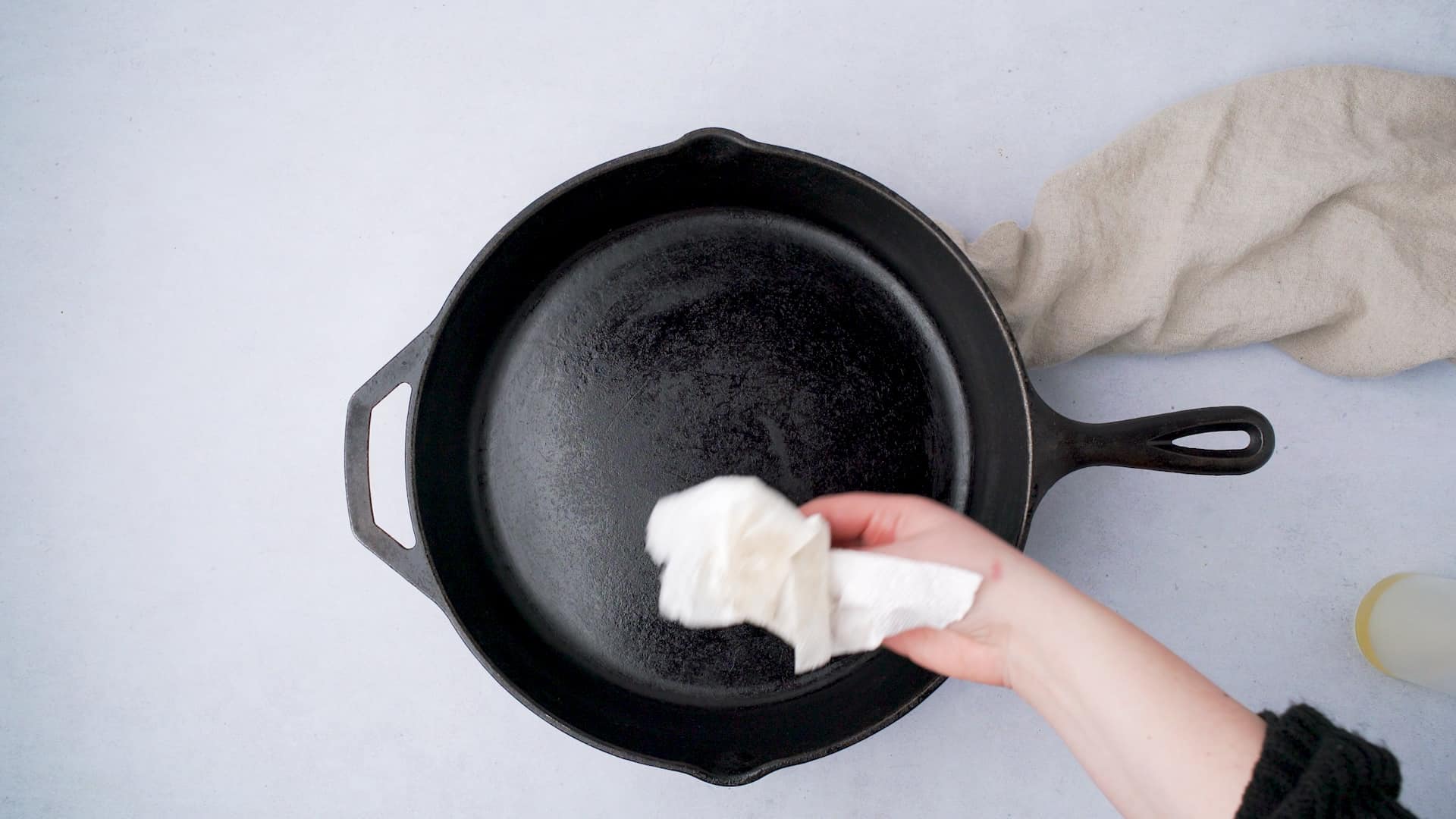
Some Tips:
- Always make sure to pre-heat your cast iron skillet completely before cooking. On medium heat, allow the cast iron to heat up for about 5-10 minutes. Cast Iron holds heat very well, but it needs time to warm up so it can heat evenly.
- Clean, dry and oil (season) your cast iron cookware every time you use it to maintain a nonstick surface and to prevent sticky, caked on messes on your cast iron.
- If food sticks a lot to your cast iron skillet, you may not be using enough oil while cooking, or you're leaving too much oil on it to re-season it. If you find that the surface of your cast iron is sticky before cooking, you will need to re-season in the oven. It's a pretty simple process of scrubbing with soap and water, drying completely, oiling the surface, drying up the excess, then placing it in the oven to seal. We'll get into more detail later, but if you re-season completely, your surface of the cast iron should come out nice and smooth!
Frequently Asked Questions:
So What Is Cast Iron Seasoning?
Seasoning is a layer of carbonized oil that's been baked onto your cast iron pan and it happens through using the pan! That's why we rub oil into the surface of the cast iron pan after washing and drying it. The more you use and properly care for your Lodge Cast Iron cookware, it forms a protective layer on top of your cookware. This layer gives your skillet an easy-release finish and makes your cast iron easy to care for and clean. The more you cook with and use your cast iron, the thicker the seasoning layer becomes, making the surface smoother, darker and more slick over time as you build up the base of seasoning.
There's actually a whole science behind it called polymerization. When oils and/or fats are heated in cast iron at a high enough temperature, they change from a wet liquid into a shiny, hardened surface that's known as polymerization. Basically, this is a reaction that binds the seasoning to the iron. If you don't have the layer on carbonized oil on the surface of your iron cookware, it would iron cookware would corrode and rust the surface of the cookware because of the oxygen and moisture in the air. You can read even further into the science of cast iron seasoning on Lodge's website here!
What Are The Best Oils for Cast Iron Pan Seasoning?
Each time you cook with your cast iron, you should be adding oil to the pan before you add in your food to prevent it from sticking. This also helps build up those layers of season a little oil to the pan before adding your food. This helps ensure the food doesn't stick, and it helps build layers of seasoning. You can generally use whatever oil you prefer, as long as the cooking temperature is below the smoke point of the oil.
One of our favorite oils is avocado oil. It has a high smoke point of 520°F, which is great because we often cook at a high temperature. Olive oil, vegetable oil, canola oil, grapeseed oil, and sunflower oil are also great choices for use on your cast iron! All of these oils have a relatively high smoke point, neutral flavor, and are often common household ingredients making them super convenient. If you're curious, head to this page on Lodge's website for an entire comprehensive guide on different oils to use for seasoning.
Why Is My Cast Iron So Sticky?
If your cast iron is sticky to the touch, that probably means that you've been leaving too much extra oil on top of the cookware when you're seasoning. Remember to only use enough oil to coat the pan and rub it in with a paper towel. Rub off any excess, and then when the cookware dries, the top will become hardened and slick, without leaving any sticky residue.
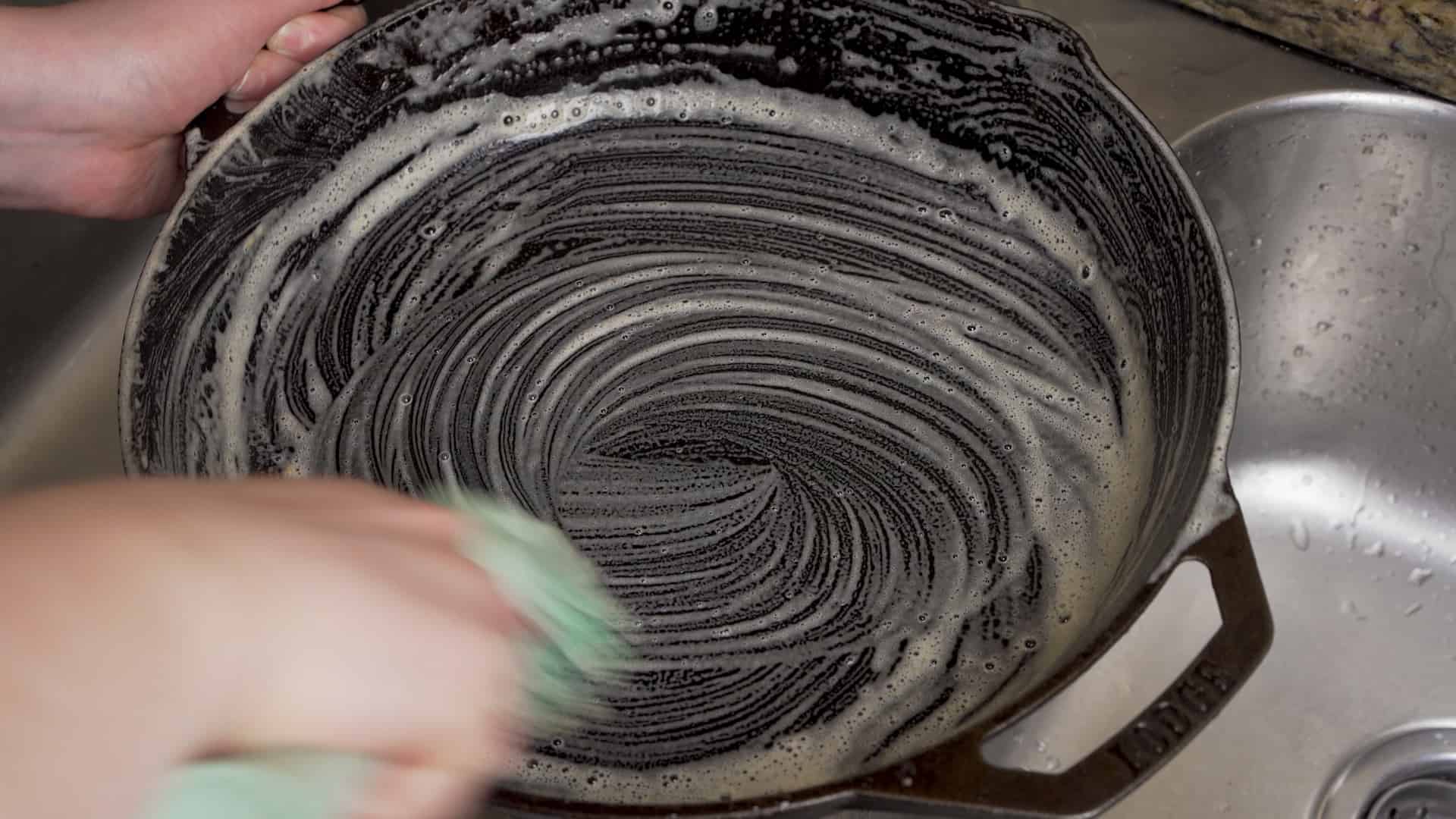
If My Lodge Cast Iron Rusts, Is It Ruined?
While it's best practice to keep your pan from rusting, it can happen. Don't worry, your pan is not ruined! If there are just a few small rusty spots, just scrub them off, rinse with water, dry, and rub with oil as usual.
If it's a lot of rust that keeps coming back, you can refurbish the cookware easily. It's very hard to totally ruin your Lodge Cast Iron cookware, so don't ever get rid of a piece of cookware because it's rusted. It's fixable!
How to Remove Rust from Cast Iron?
If your cast iron is sticky or rusty, it's an easy fix to restore it, so don't worry. To restore your cookware, you will want to scrub it down with a steel wool brush using soap. You will really want to scrub all the rust off and smooth the surface. Make sure you do the whole cast iron! After it's clean, rinse, dry and oil it as usual. Just make sure there is no excess oil since we are going to bake it in the oven to speed up that base layer seasoning process.
In a hot oven (between 350°F - 450°F) bake it for one hour, with the cast iron flipped upside down, or the bottom side up. We like to put aluminum foil or a baking sheet on the rack underneath to catch any oil spills that might happen. After the cast iron has baked, let it cool in the oven. That should give you a nice slick finish with that built up layer of base seasoning!
Can I Clean My Cast Iron In the Dishwasher or Soak It To Remove Residue?
No, you don't want to do either of these things. Both of these methods will rust the cast iron cookware. If you have a really stuck on mess on your cast iron, scrub with soap, use a pan scraper or simmer on the stovetop with water to deglaze the pan and loosen any extra bits.
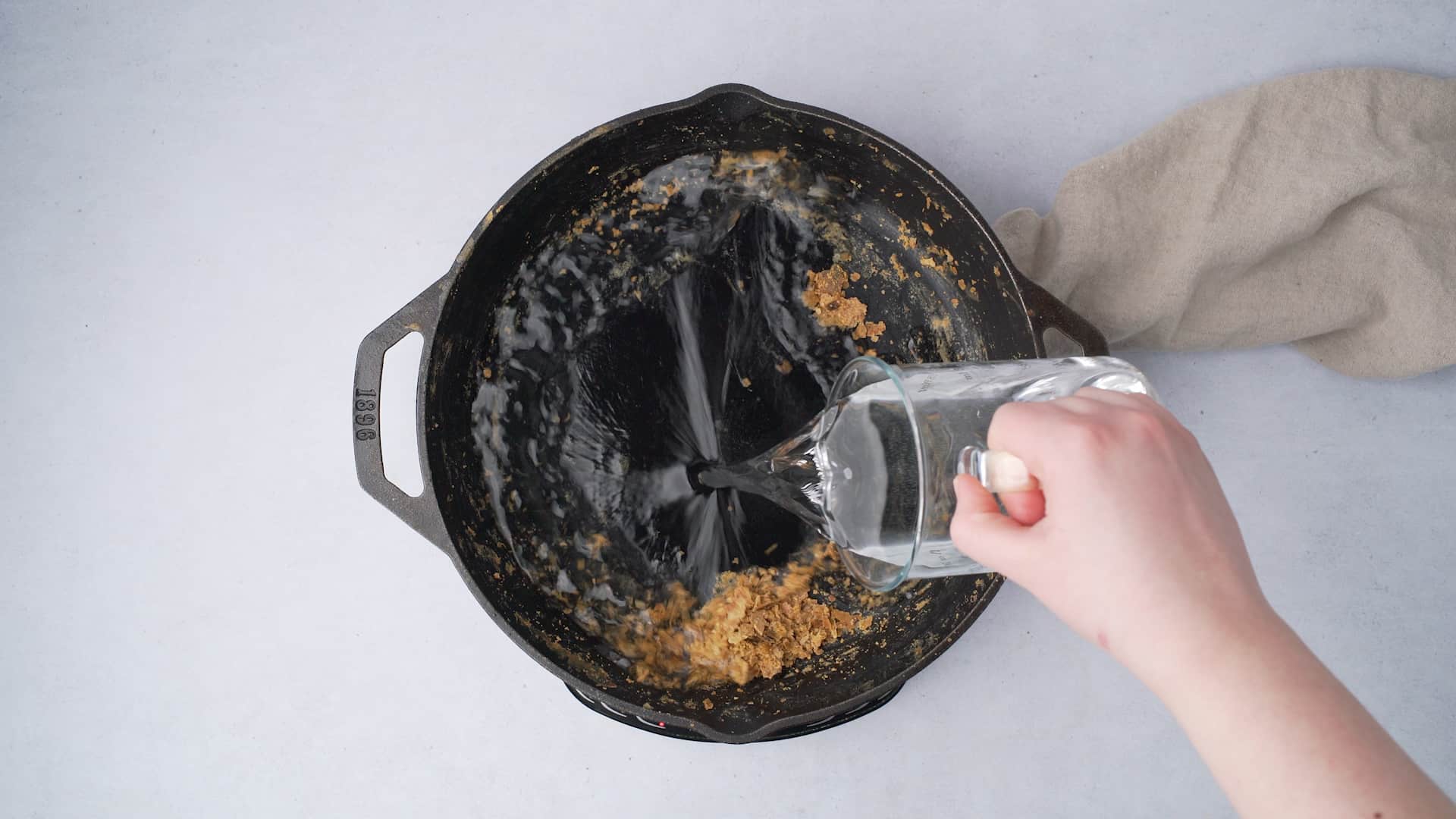
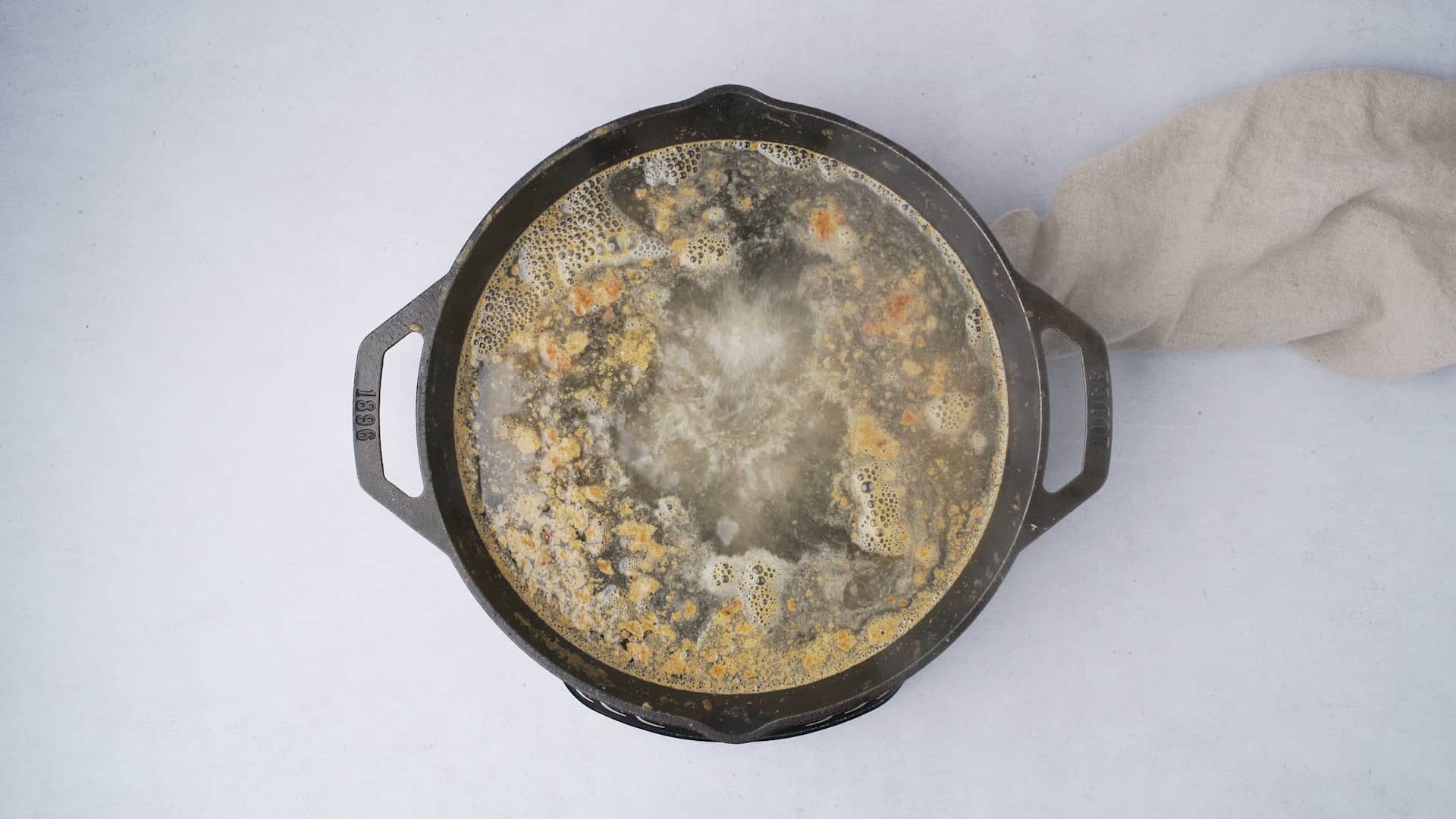
Why is a Black Residue On My Food or Towel After Drying My Cast Iron Skillet?
If you notice black flecks on your food or when cleaning your cast iron, don't worry, it's just seasoning and is totally safe to consume. Sometimes layers of seasoning can flake off your cast iron cookware if the layers of seasoning aren't totally bonded to the iron surface.
This happens often if your pan is new and still building up a strong base of seasoning. If your pan is flaking, don't worry. Just scrub the pan, rinse it off, completely dry it, and rub with oil. To build up a very strong layer of seasoning, you can season it in the oven.
Some of Our Favorite Recipes That Use Your Lodge Cast Iron Skillet?
We love our lodge cast iron cookware because it's so versatile. We bake in it, as well as cook almost everything. Here's a few of our favorites!
- Jalapeño Popper Chicken Skillet
- Roasted Brussel Sprouts with Bacon and Balsamic
- Keto Brown Butter Bacon Cornbread
- Cheeseburger Casserole Skillet
- Pepperoni Pizza Chicken Skillet
- Low Carb Chocolate Chip Banana Bread Skillet
- Creamy Parmesan Chicken and Butternut Squash Skillet
Common Myths:
There are a lot of myths people will tell you when it comes to cleaning cast iron skillet. We are going to bust 4 most common myths so that you know how to actually take care of your cast iron pan.
Myth 1 - You Can't Use Soap To Clean Cast Iron Skillet.
Not True!! You can definitely use mild dish soap to clean cast iron if you want. Lodge says so, and they are the cast iron pros, they've been making cast iron cookware sine 1896, so they make the rules if you ask us.
Now we know some people are pretty adamant about not using soap to clean cast iron (we even subscribed to this belief for many years) but there is a good reason why. This is an old myth that dates back to decades ago when soap was made with lye and vinegar. People still think that modern dish soap strips away the seasoning of the cast iron, but it’s not true. You can certainly use a little dish soap. Just make sure to wash it out and dry completely and season as usual.
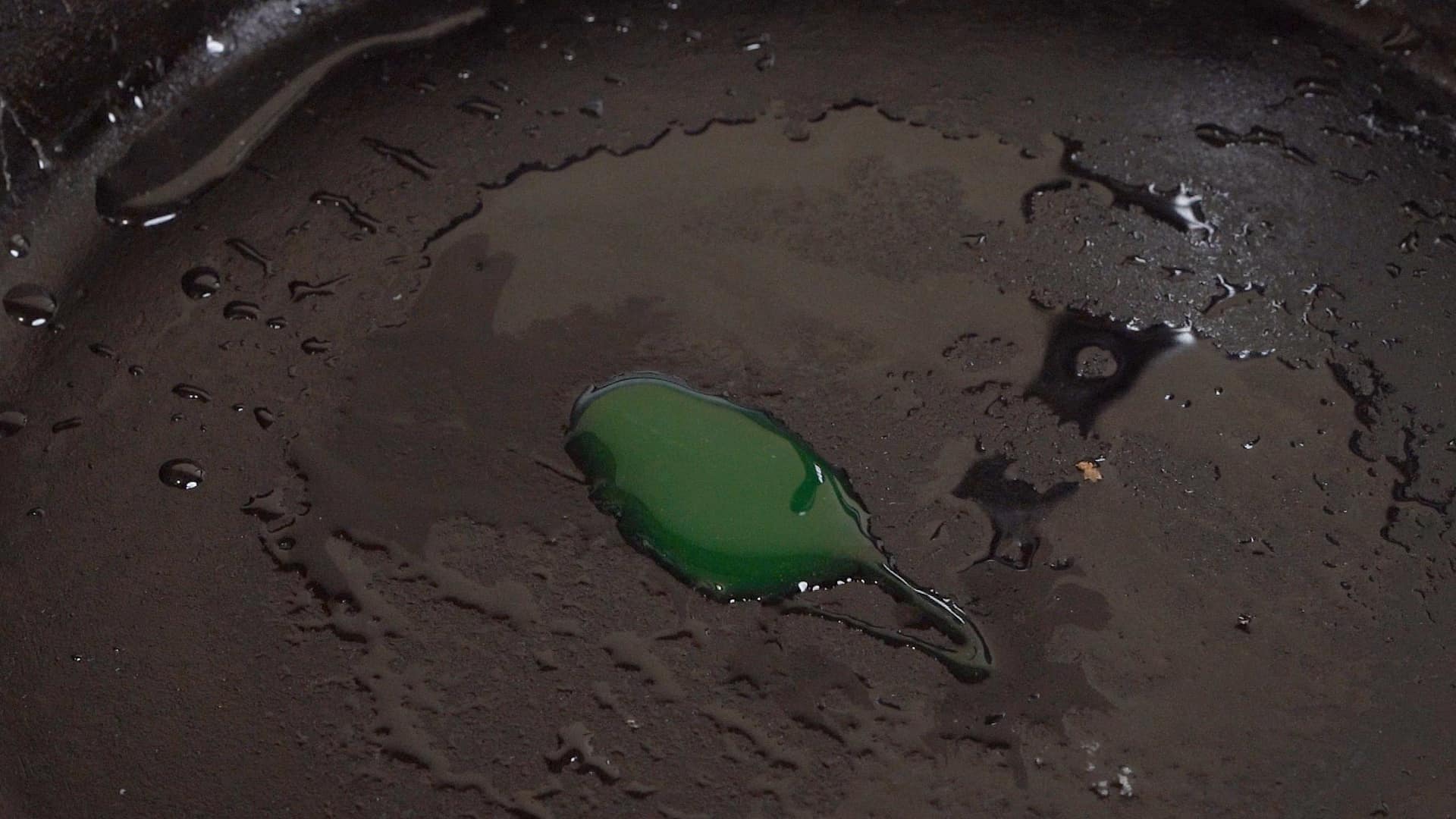
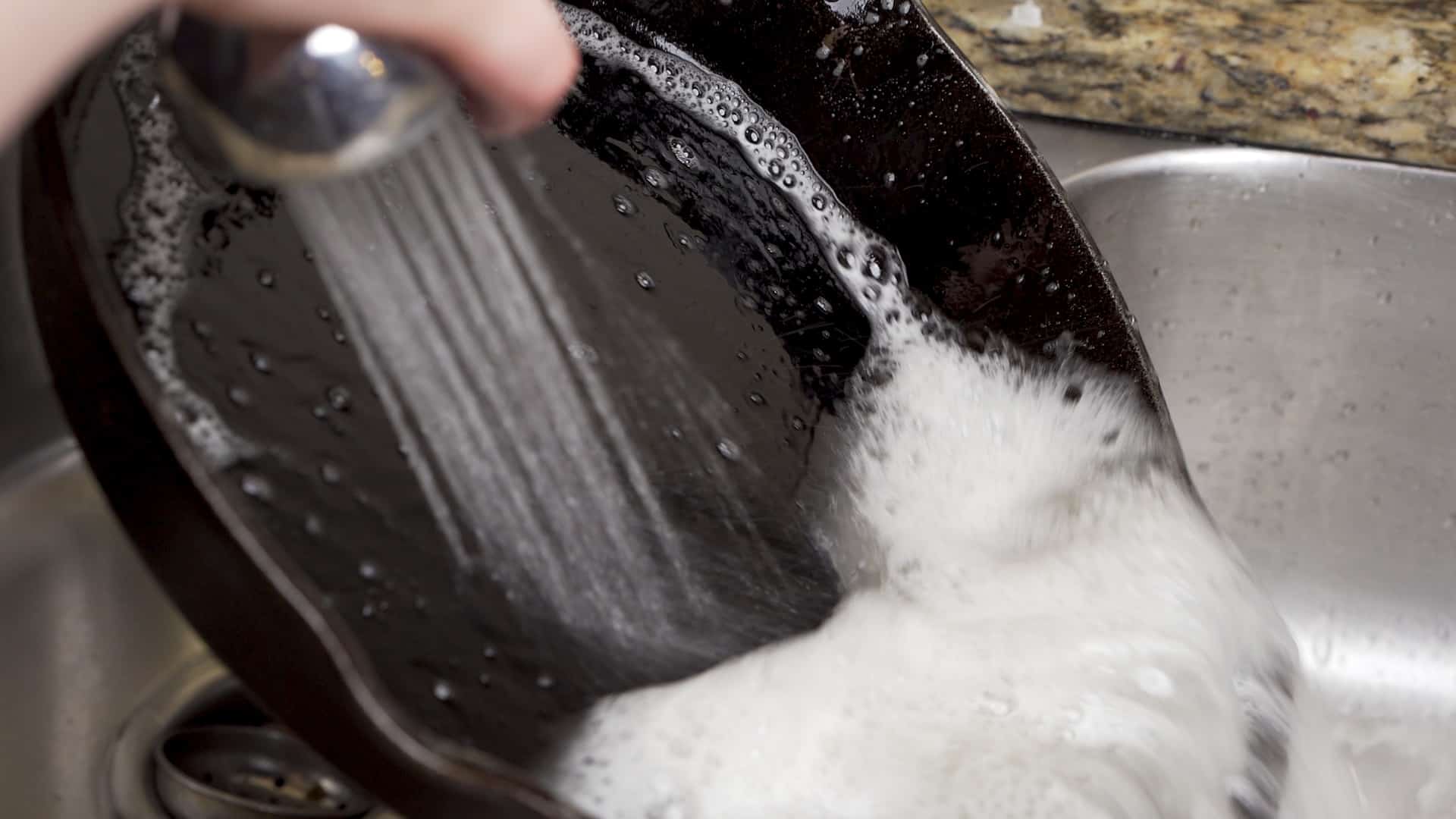
Myth 2 - You Can't Use Metal Utensils in Your Lodge Cast Iron Cookware.
Not True, you definitely can! Lodge Cast Iron cookware is incredibly durable, and you can use metal utensils or really any utensil you like.
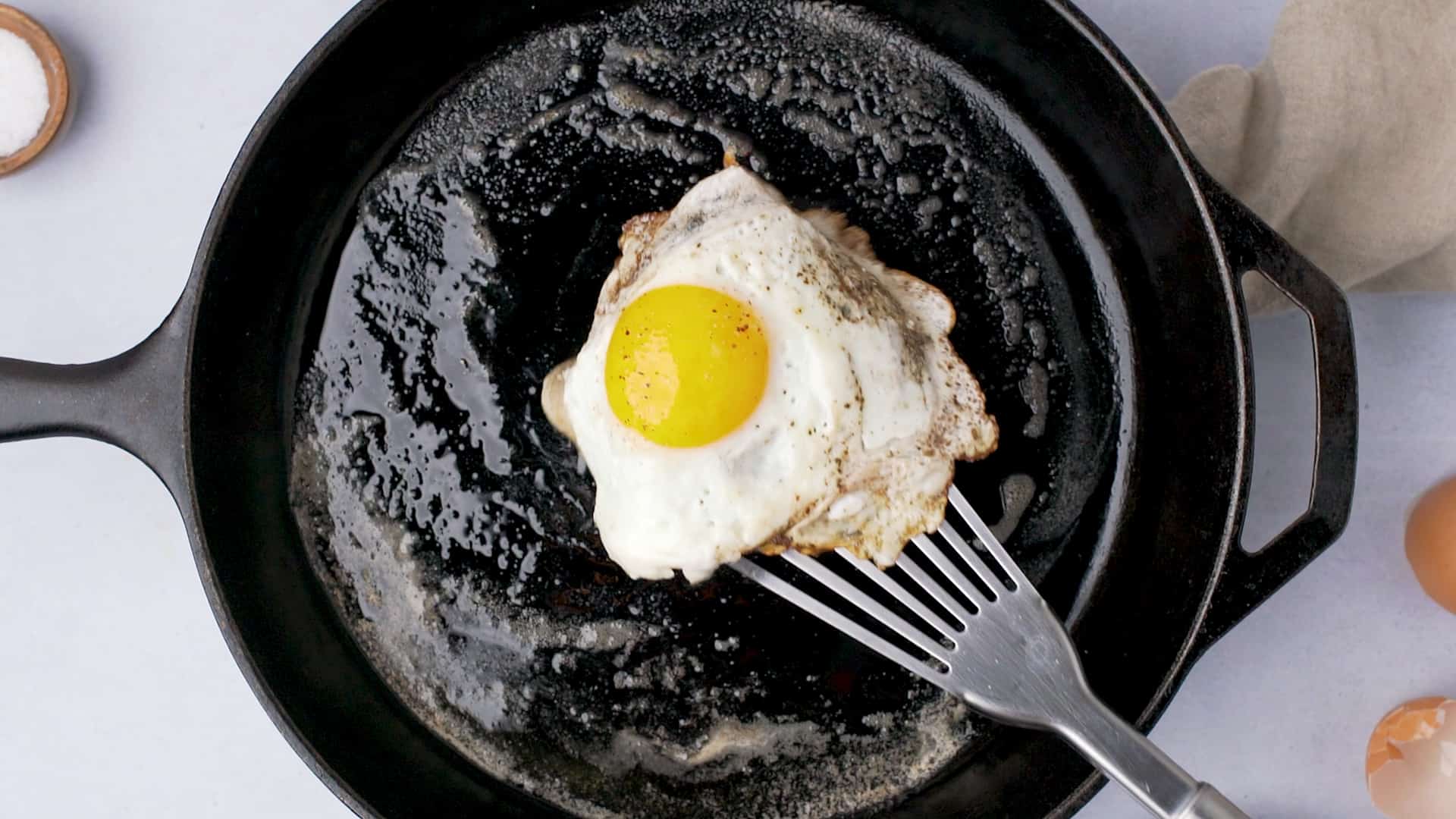
Myth 3 - You Have To Season Your Brand New Lodge Cast Iron Cookware.
False! You don't actually, because the folks at Lodge do it for you. 🙂 They use vegetable oil to create a thin layer of seasoning in a large oven. This is a good protective base layer that creates a slick, hardened surface. All you have to do when you first get your cast iron is rise if off, dry, then cook!
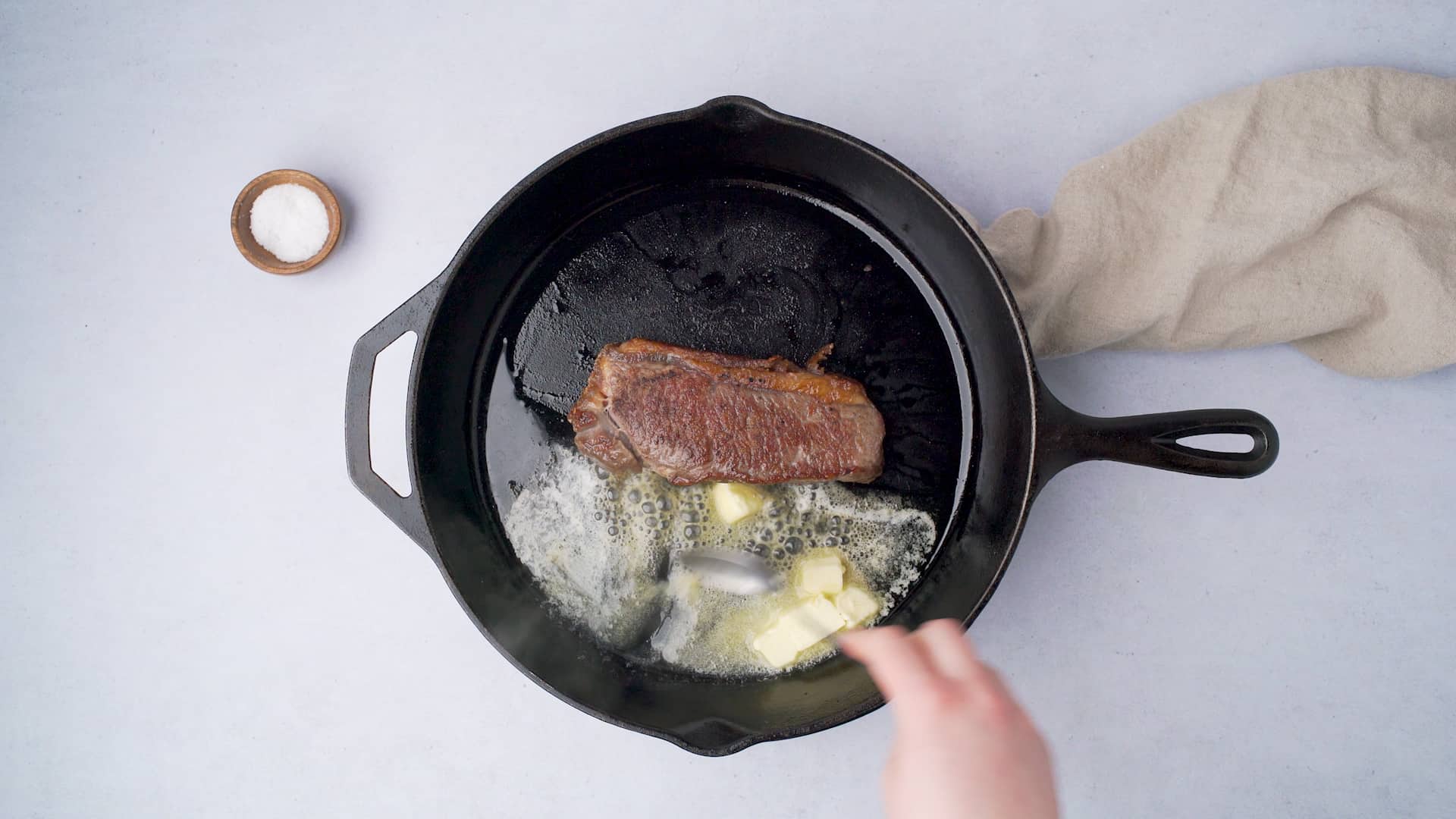
Myth 4 - You Can't Cook Acidic or Alkaline Foods In Your Cast Iron.
This is mostly false, or it isn’t entirely true. While these foods can break down the seasoning if cooked for long periods of time, if your cast iron is well seasoned, it should be completely fine. Tips to avoid breaking down the seasoning would be: wait until your cast iron has a great base layer of slick seasoning, and don’t cook or leave acidic (like these lamb meatballs with feta and lemon) or alkaline foods in your pan for too long. Cook, then store leftovers and clean right away.
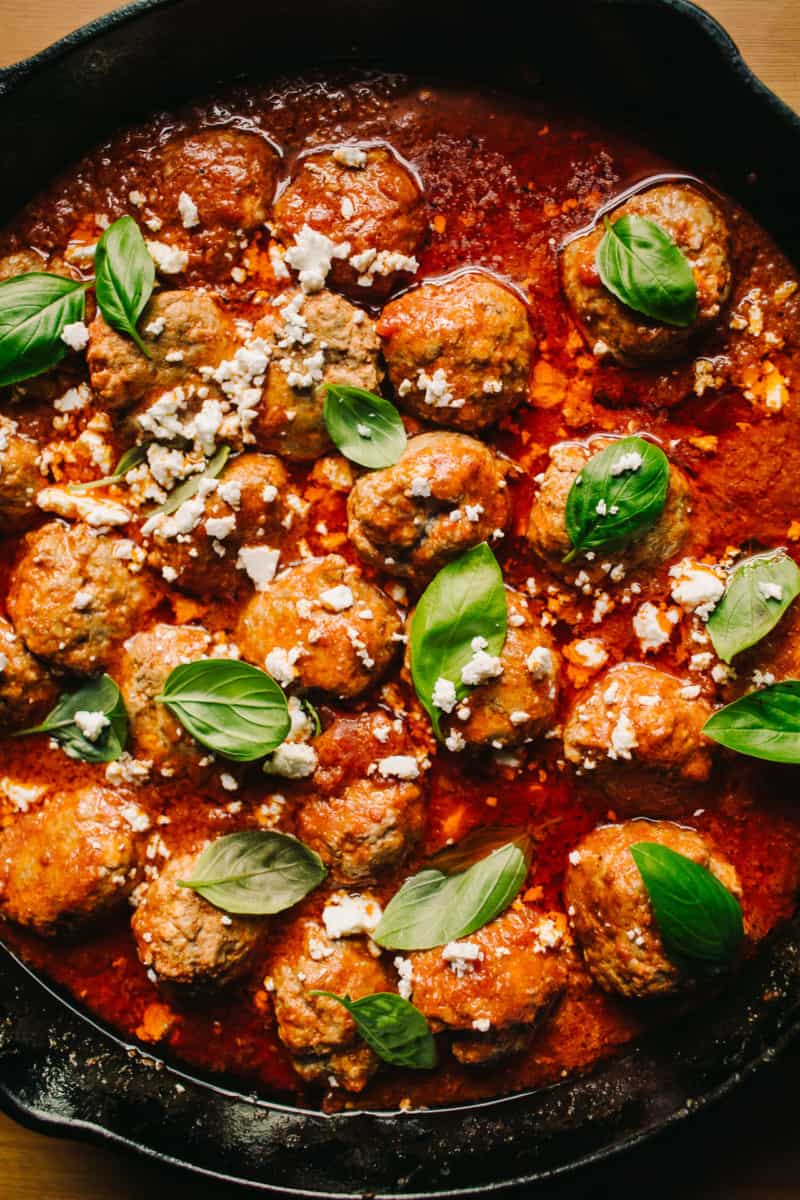
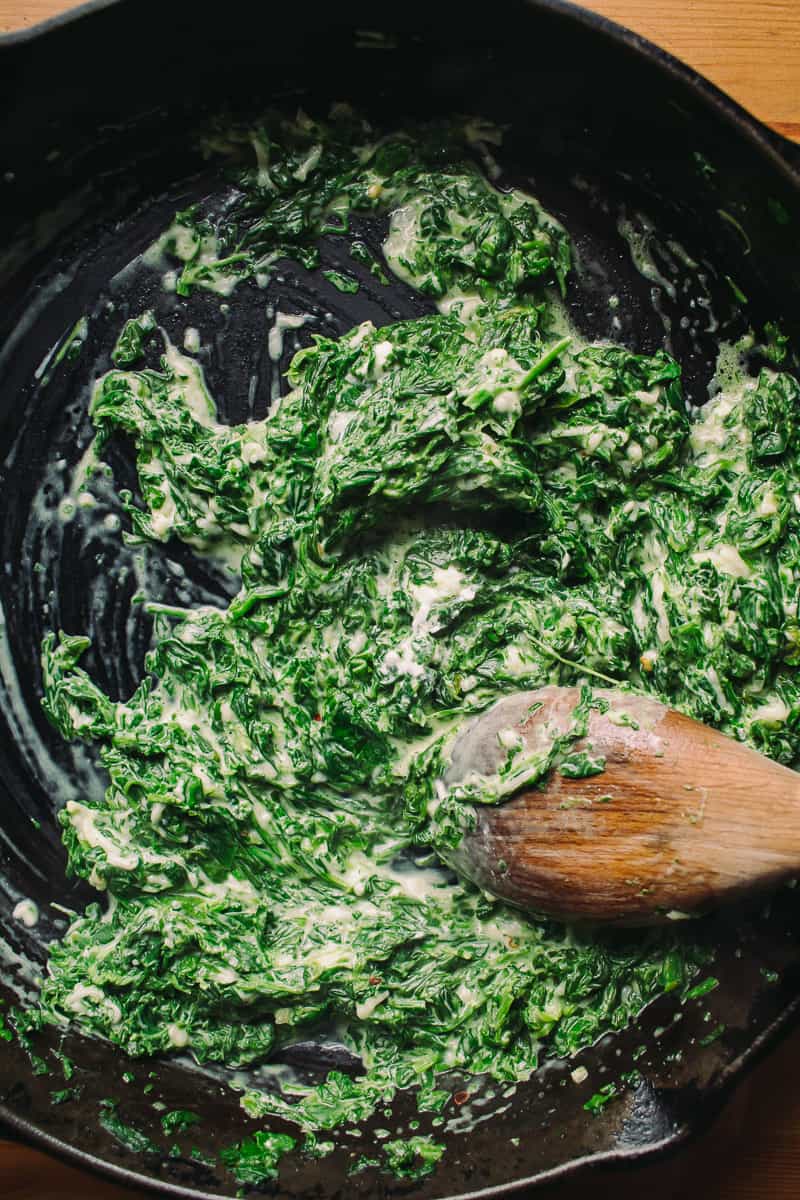
Do you have any other questions that we may have missed?
If you found this guide on how to clean a cast iron skillet helpful, let us know what you think, would ya?! Leave us a comment, or catch up with us on Facebook or Instagram, or pin to your favorite Pinterest board for later. Say to us on Instagram at @afullliving!
Thanks for stopping by! Be sure to subscribe to our email newsletter so you're the first to know about new recipes we post on our blog.
Until Next Time,
Briana & Chamere

Comments
No Comments